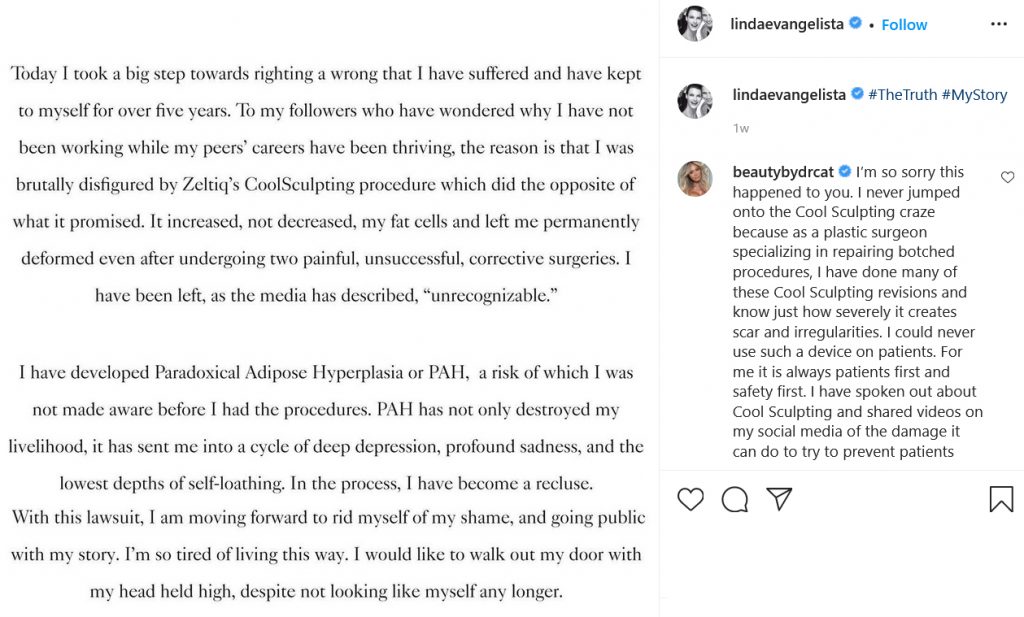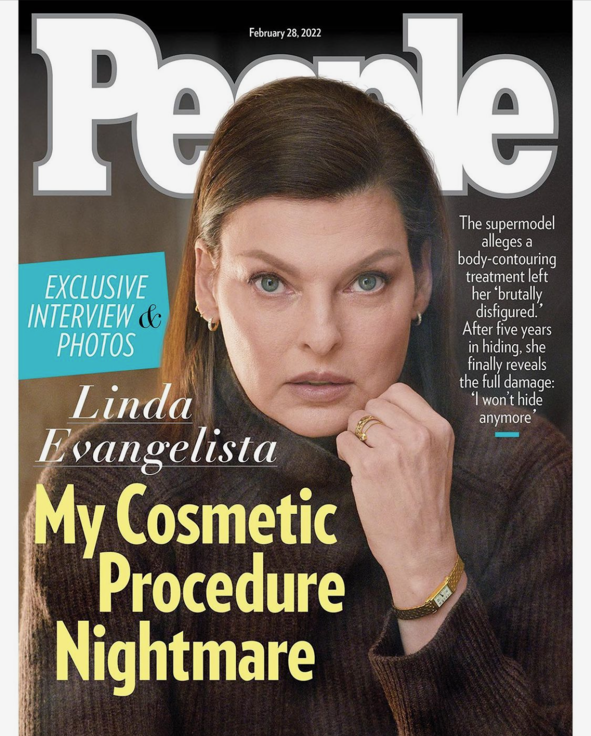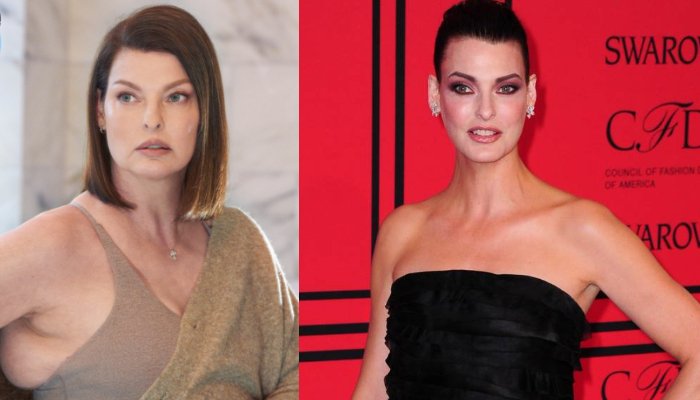
Body Contouring
19 August 2022

Have you heard of paradoxical adipose hyperplasia? This condition is now one of the most searched for terms on search engines after supermodel Linda Evangelista filed a lawsuit against the makers of Coolsculpt, a fat freezing treatment after suffering this complication.
In a heartfelt post on instagram in 2o21, Linda Evangelista addressed the reason why she left the limelight for the last five years. As a result of a non-surgical face and body sculpting treatment called Coolsculpting, she suffered a complication known as paradoxical adipose hyperplasia. Instead of having her fat cells removed; paradoxically, as its name suggests, the fat cells grew.

According to Linda Evangelista, this complication from Coolsculpt fat freezing has resulted in her looking “brutally disformed” and sent her into a “deep cycle of depression, profound sadness and the lowest depths of self loathing”. In court documents, Linda Evangelista stated that she is now “unemployable and unable to earn an income as a model” due to paradoxical adipose hyperplasia. She is seeking $50 million in damages from Zeltiq Aesthetics, the manufacturer of Coolsculpt.
The complaint and legal documents of lawsuit between Linda Evangelista and Zeltiq Aesthetics can be read here.

Update February 2022: Linda Evangelista has shared her experience with paradoxical adipose hyperplasia in People magazine; as well as her treatment for it with surgeries.
Update August 2022: Linda Evangelista has settled her lawsuit with Zeltiq Aesthetics for an undisclosed sum. This month, she graces the cover of British Vogue magazine; and candidly admits to having her face and neck taped up for the photos. She opens up about how Coolsculpting and paradoxical adipose hyperplasia have affected her in the same issue.

In this review, you can learn about fat freezing (cryolipolysis) and paradoxical adipose hyperplasia (PAH).
Coolsculpting is a brand of cryolipolysis treatment. Cryolipolysis is a non-surgical and non-invasive treatment that removes fats in the face, neck and body by freezing the fat cells (i.e. fat freezing). The frozen fat cells die and are removed by the body. Coolsculpting is US FDA approved for reducing fat in the abdomen, flanks, thighs, bra fat, back fat, banana roll, and most recently the upper arms.
The idea of using cold temperatures to freeze off or kill fat cells was an observation in children eating popsicles. In 2008, two scientists from Harvard Medical School, Dr Rox Anderson and Dr Dieter Manstein noticed that some children sucking on popsicles developed a condition called cold panniculitis or popsicle panniculitis. These children developed permanent dimples in the cheeks. The coldness of the popsicles damaged fat cells in the cheeks of these children, causing depressions in their cheeks.

Cryolipolysis with Coolsculpting is a treatment for patients to lose unwanted fats in their face, neck and body. However, cryolipolysis or fat freezing is not intended for large amounts of fat loss; especially in overweight patients. Instead Coolsculpting cryolipolysis is better used for body contouring or removing stubborn pockets of fat that have not responded to dietary changes and exercise in patients at ideal body weights.
In Singapore, Coolsculpting fat freezing is a treatment that is performed by doctors. A gel is first applied to the skin over the intended area of fat freezing to protect the skin. Coolsculpting applicators then cool the skin and the underlying fat tissues to about zero degrees celsius. The treatment time ranges from 30 minutes to two hours, depending on the body part treated.

Bringing the fat cells to freezing point causes inflammation, shrinking and eventual death of the fat cells. Over time, the thickness of fat in the treated area reduces in the patient. These changes happen over one to six months.
In some patients who have undergone Coolsculpting Fat Freezing, instead of finding their fat cells decreasing, the fat cells instead increase in size. This is known as Paradoxical Adipose Hyperplasia (PAH). A simple way of explaining it: the patient looks fatter rather than thinner with PAH.
the areas of their body affected by PAH, patients develop visible fat lumps. These lumps are well outlined and are classically described as “sticks of butter”. This is because PAH looks like a long stick of butter under the skin; matching the shape of the Coolsculpt applicator.
PAH typically occurs 2-3 months after Coolsculpting fat freezing treatment. Paradoxical adipose hyperplasia does not go away on its own; so this complication of cryolipolysis is understandably distressing for affected patients.

The exact mechanisms causing the development of paradoxical adipose hyperplasia after Coolsculpting fat freezing remain unclear.
Some of the hypothesised mechanisms include hypertrophy of pre-existing fat cells, migration of fat cells and/or stem cells into the affected areas, changes in metabolism of fat cells and signalling mechanisms. What are the symptoms of Paradoxical Adipose Hyperplasia?
Essentially the person looks fatter instead of slimmer. The affected area bulges like a “stick of butter”, due to the shape of the body that has been gripped by the Coolsculpting applicators. Besides swelling, hardness, redness and bruising, some patients experience numbness and pain.
The risk of developing PAH after Coolsculpting varies across different studies. According to the manufacturer of Coolsculpting, Allergan, the risk of PAH is 1 in 4000 cycles or 0.025%. One recent study demonstrated a risk of 1 in 138 Coolsculpting cycles or 0.72%.
A more recent review of the incidences of PAH after Coolsculpting in eight clinics in Canada over four year was recently published in 2021. This study involving than eight thousand patients found that the risk of PAH after Coolsculpting to be less than 1 in 2000- which is almost double than the risk quoted by the manufacturer of Coolsculpting.

Some of the risk factors for developing paradoxical adipose hyperplasia after fat freezing are: male patients, Hispanic or Latino ethnicity, use of large Coolsculpting handpieces and cryolipolysis performed in the abdominal region. To avoid developing paradoxical adipose hyperplasia, patients and doctors should consider alternative body contouring treatments or cryolipolysis devices with smaller handpieces.
PAH from Coolsculpting fat freezing does not go away by itself. Treatments for paradoxical adipose hyperplasia involve surgical correction such as excision, liposuction and abdominoplasty.
Even with surgeries, the treatments for PAH is not straightforward. Fat that has been frozen is denatured, inflammed and scarred down. Some patients may require more than one surgery to treat their PAH.
For patients who have a confirmed diagnosis of paradoxical adipose hyperplasia after Coolsculpting, Zeltiq will reportedly pay for surgical treatment of the PAH. But on one condition- that the patient signs a confidentiality agreement and release. With this, the patients are not to publicise their experience and release the company of all claims.
For Linda Evangelista; she underwent two surgeries (full body liposuction). She also had to wear compression garments, girdles and chin strap for 8 weeks. Even with these treatments, the bulges on body caused by paradoxical adipose hyperplasia are still visible. According to her interview in People magazine, Linda Evangelista was initially offered corrective surgery for the PAH complication by Zeltiq, the manufacturers of Coolsculpting. However, on the eve of the liposuction, Zeltiq informed here that the cost of the surgery would be covered only if she signed a confidentiality agreement. She refused and paid for her treatments herself.
References:
1. Paradoxical Adipose Hyperplasia After Cryolipolysis. Jalian et al. JAMA Dermatol. 2014 Mar; 150(3): 317–319.
2. Complication of ‘fat freezing’ procedure may be more common than thought. Kelly et al. Plast Reconstr Surg. 2018 Jul;142(1):17e-22e.
3. A Multicenter Evaluation of Paradoxical Adipose Hyperplasia Following Cryolipolysis for Fat Reduction and Body Contouring: A Review of 8658 Cycles in 2114 Patients. Nikolis and Enright. Aesthet Surg J. 2021 Jul 14;41(8):932-941.